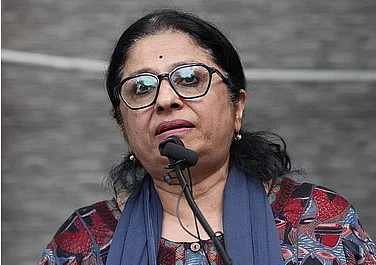To the Ancestors
On the plateau, You
Gave birth to us (the Asurs)
But did not show us the way
In the plateau region, You
Turned the Asurs into labourers
You never gave us money for education
Never showed us the way to success
Now we have no language
Now we have no culture
How do we address you?
How do we preserve our memories of you?
O ancestors of the earth! O ancestors of the skies
O our parents! O the elders
Providing you with food was our forest’s responsibility
The fields were your means of livelihood
This vast plateau was your school
The hills and waterfalls were your guides
O ancestors of the earth! O ancestors of the skies
O our parents! O the elders
We will learn to sing and dance like you
We will definitely learn to live our lives like you
We will learn to dance like you
We will learn to hunt like you
All those animals
Those who shake the foundation of Asur households
Those who are misleading our waterfalls
Those who have the habit of devouring Earth and humanity
We will learn to live like you
Content and innocent like the plateau
In this region created by you
Making Hasa
We’re making
hasa [charcoal] on the hills
We’re burning hasa on the hills
Hasa ready!
We make loha [iron] in a kuthi [smelting-house] on the hills
We forge our tools in the kuthi on the hills
Lo!
Take sansi-Kutaisi in front
Hang the ghana [sledgehammer] over your shoulder
Now let’s forge the pal [plowshare]
Come on! Hurry up!
(By Sushma Asur, poet hailing from the Asur tribe in Jharkhand and translated in the Author)
The Asurs are believed to inhabit the plateau lands of Jharkhand since times immemorial. Remnants of the Asur settlements have been discovered by archaeologists in various small pockets of Jharkhand, West Bengal, and Orissa. After an initial spell of nomadic existence, the Asurs settled down across Sakhua Pani, Amtipani Popopat, Sujam, Khariapat, Herodeeh, and Ambakona. Historians believe that the Asurs had mastered the art of erecting beautiful residential structures in the past. They were one of the first to master the skill of extracting iron from its ore. It is also believed that the Asur tribe had made the weapons for the battle of Mahabharata.
Bichana, a village around 10 km away from Khunti district is considered to be the first settlement site of the Asurs. Iron and elephants, it is believed, played a pivotal role in Asur’s journey of progress and displacement. The Puranas refer to the Asurs as devotees of Lord Shiva. The series of Shivlingas excavated near the banks of river Kanchi and in the village of Anjan is believed to have been crafted by the Asurs.
The peace-loving Asurs used to work hard in the fields and harvest potatoes, that incidentally is suitable for their drought-prone region. Bauxite and iron ore mining have always been matter of great concern for the Asurs. Mining companies pushed the Asur settlements further up to the margins, extracted ore and left all the gaping holes intact. The defiant Asurs are however, certain that the mindless extraction will be punished.
The Asurs consider Mahishasur, Lohasur (master smelter), and Ravana to be their ancestors. Distraught by the evil portrayal of Mahishasur by the upper castes, the Asurs claim that Mahishasur was a just, liberal king, a valiant protector of all his subjects. Their king it is believed was deceitfully killed by Durga.
Mahishasur, according to them has been wrongly portrayed as an evil character. Hence, while one section of the society rejoices in the festivities of Navratri, the Asurs mourn the death of their king.
The woes of the Asurs do not end here. They claim that Tanginath was once their holy pilgrimage where their king, Mahishasur, had vested all his positive energies. Their shrine has now been hijacked and renamed by outsiders. People with an eye for detail, however, easily detect relics of the Asur culture in Tanginath.
The resilience of the Asurs, despite all odds, has not ebbed. They seek inspiration from the traditional knowledge handed down to them by their elders and remain satisfied with the means at their disposal. Music is an integral part of their existence They sing about almost every phenomenon and their songs become their sole companions when they wander into forests and hills. The Asurs sing to their Gods and their ancestors and seek their blessings.
The cultural practices of the Asurs, especially their reverence for Mahishasur appear to infuriate many. Outright denouncements are common on social media. An upsurge of such condemnations is especially noticed during Durga Puja.
With the changing times, public opinion needs to be tutored. Our culture has never been homogenous. Cultural freedom, and mental, and moral values are important ingredients of a peaceful society. Discarding or doing away with even an iota of a Nation’s cultural tradition will project a lopsided, incorrect picture of our diverse societies.
With the philosophy of ‘to each one his own’ we need to ‘create space’, as Ngugi Thiongo had said, ‘for a thousand flowers to bloom’ or a thousand pockets of cultural groups to flourish. Variety actually imparts beauty to our diverse culture.
(Dr. Pragya Shukla is an Assistant Professor in Department of English Studies, Central University of Jharkhand)





















